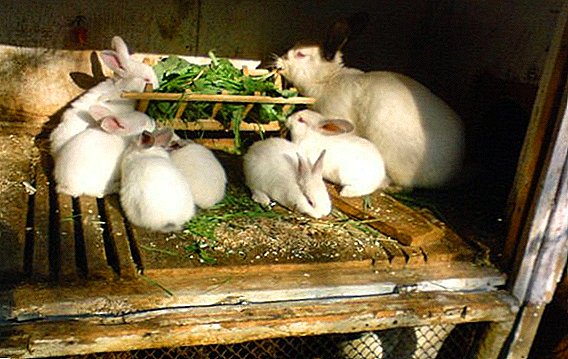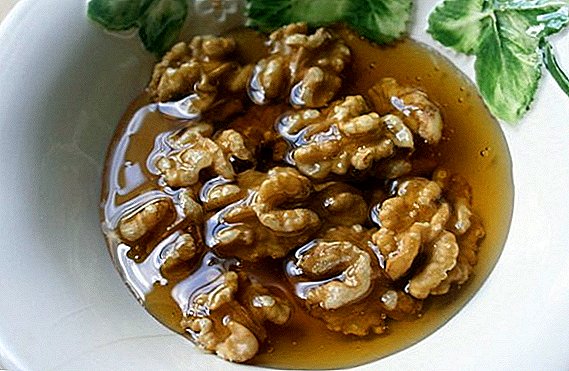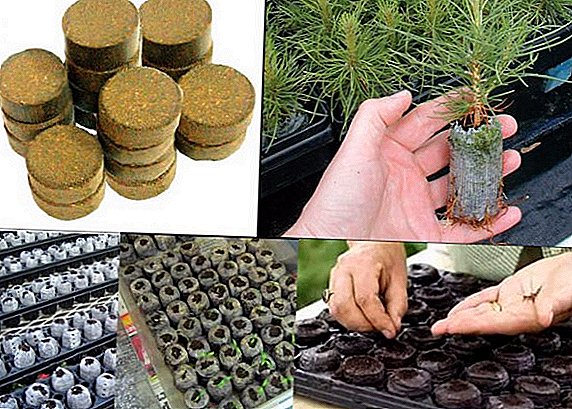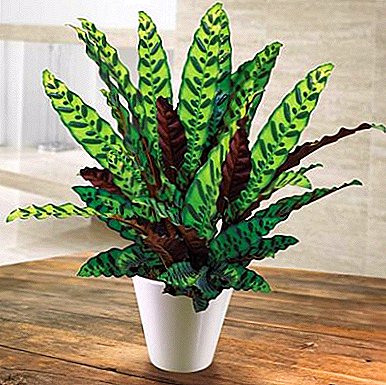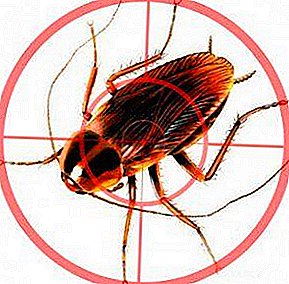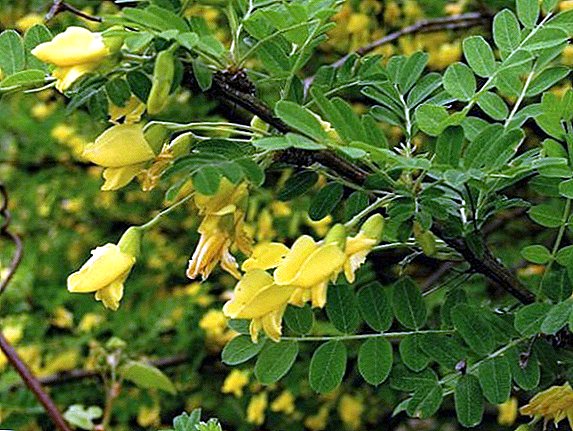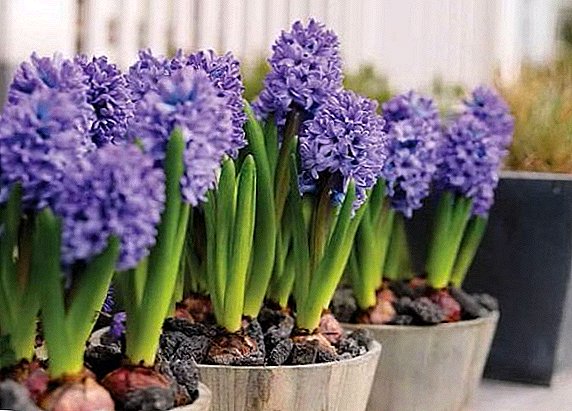 Hyacinth can be both a house plant, and garden. Hyacinths begin to bloom in early spring. The flowers are very bright and fragrant. If we talk about modern hyacinths, they can hit the imagination with its color variety - from white to maroon-black, pink and purple. Hyacinth is a versatile flower that can be suitable for timely forcing and for pruning. How to plant hyacinths, where to grow them and how to multiply will be discussed further.
Hyacinth can be both a house plant, and garden. Hyacinths begin to bloom in early spring. The flowers are very bright and fragrant. If we talk about modern hyacinths, they can hit the imagination with its color variety - from white to maroon-black, pink and purple. Hyacinth is a versatile flower that can be suitable for timely forcing and for pruning. How to plant hyacinths, where to grow them and how to multiply will be discussed further.
How to choose a place for planting hyacinth
Hyacinth is a heat-loving plant that grows in countries with a warm climate. Hot summers and the absence of sub-zero temperatures are ideal conditions for growing a plant. Therefore, for planting hyacinth (its bulbs) should take care that the place was sunny, and was also closed from the cold gusts of wind.
 A feature of hyacinth is the lack of a dense skin of the bulb that protects it. Therefore, these plants do not tolerate high soil moisture. Consequently, the plot you have chosen should be ideally even, not have holes, depressions in which water can accumulate. The soil itself must be breathable. If underground waters are located close to the surface, then hyacinth bulbs should be planted using drainage, as well as a high bulk ridge.
A feature of hyacinth is the lack of a dense skin of the bulb that protects it. Therefore, these plants do not tolerate high soil moisture. Consequently, the plot you have chosen should be ideally even, not have holes, depressions in which water can accumulate. The soil itself must be breathable. If underground waters are located close to the surface, then hyacinth bulbs should be planted using drainage, as well as a high bulk ridge.
Preparation of soil for planting
The question of how to properly care for hyacinth, worried about many experienced gardeners. You need to start with the preparation of the soil for planting. The best option for the plant will be planting it in sandy, light, slightly alkaline, neutral, rich in organic matter and nutrients in the ground. Heavy clay soil can be used only after a general improvement in its structure, which is achieved with the help of sand, as well as mineral and organic fertilizers.
 The main condition - the preparation of the beds should be carried out in advance, namely - no later than a few weeks before planting. This will allow the soil to settle and thicken. The soil itself should be dug up to a depth of 40 cm. Compost, humus, potash salt and superphosphate are added to it.
The main condition - the preparation of the beds should be carried out in advance, namely - no later than a few weeks before planting. This will allow the soil to settle and thicken. The soil itself should be dug up to a depth of 40 cm. Compost, humus, potash salt and superphosphate are added to it.
Important! If you have an insufficient amount of fertilizer, then they can be added only in the wells.
In order to improve the physical properties of the soil, chalk, dolomite powder, lime and sand are added to them. After this, the beds can be covered with a black film in order to drown out the germination of weeds.
Terms and scheme of planting hyacinth
For hyacinths, outdoor planting and maintenance is quite simple. If you are in the middle lane, the hyacinth should be planted in the month of September, but in the south, the planting should be done in early October when the soil temperature drops to 10 ° C. If you plant the hyacinths early, they will not only take root, but also germinate, because of what they freeze in winter.
Late disembarkation is considered dangerous, since the bulbs cannot germinate and take root, which also leads to the suffering of the plant during the winter cold.
 Hyacinth can be planted according to a certain scheme: a larger bulb is planted at a distance of 25 cm from the shallow one, leaving about 10 cm. The hole in depth should reach 16 cm, since this is a triple height of the bulb, if you count from its bottom. You can plant in the fall - the main period when planted hyacinths.
Hyacinth can be planted according to a certain scheme: a larger bulb is planted at a distance of 25 cm from the shallow one, leaving about 10 cm. The hole in depth should reach 16 cm, since this is a triple height of the bulb, if you count from its bottom. You can plant in the fall - the main period when planted hyacinths.
Planting in the fall
Hyacinths should be planted in early autumn (approximately in October or September). Gardeners recommend not choosing too large bulbs for planting. It is better to take the middle (flower beds), which will be able to adapt their flower stalks for unstable weather. The bulbs should be sorted out, selected soft, diseased, damaged.
Did you know? Before planting a hyacinth, its bulbs must be kept in a fungicide solution for 30 minutes.
The depth to which the hyacinth bulb should be planted is 17 cm, if your bulbs reach 6 cm in diameter. The distance between the bulbs should be 15 cm, and between the holes - 20 cm. If the bulbs are smaller, they are planted at a shallower depth. The flower grows well in open soil. To do this, they create a so-called "sand vest" - a layer of river sand 4 cm thick is poured into the bottom of the furrow, the onion is slightly pressed into it and filled up again with sand and then with earth. This method will not allow water to stagnate in the ground and prevent bulbs from rotting. After you have planted the bulbs, the area should be carefully watered. 
Landing in spring
Do not try to plant a hyacinth in the spring - during this period it is not planted.
Features watering hyacinth
The flower should be watered when there is a dry time in the yard. The earth should get wet 15-25 cm deep. Hyacinth blooms in the spring, and at this time the soil is very well moistened, because only the snow melted.
Important! When watering hyacinth should take into account the temperature state of the environment, humidity, soil moisture. Flower should not pereuvlazhnyat.If too much moisture accumulates, it will lead to plant rotting and death of the flower.
Top dressing and care of the soil
 Hyacinth flower needs at least three dressings. They should be made in dry or dissolved form. If you choose the second method, then you do not need to take too much fertilizer, and the soil should be thoroughly moistened before adding top dressing. The first feeding is carried out at the very beginning of flower growth. In this case, experienced gardeners use a ready-made mixture, which consists of nitrate and superphosphate. The second fertilization occurs in the period of budding. The third is after the plant has stopped blooming. A mixture of superphosphate and potassium sulfate is used.
Hyacinth flower needs at least three dressings. They should be made in dry or dissolved form. If you choose the second method, then you do not need to take too much fertilizer, and the soil should be thoroughly moistened before adding top dressing. The first feeding is carried out at the very beginning of flower growth. In this case, experienced gardeners use a ready-made mixture, which consists of nitrate and superphosphate. The second fertilization occurs in the period of budding. The third is after the plant has stopped blooming. A mixture of superphosphate and potassium sulfate is used.
When you need to transplant hyacinths
In the first times hyacinth blooms very brightly and magnificently. But each bloom reduces the percentage of plant pomp. Therefore, in order to maintain a hyacinth in excellent condition after the flower has blossomed, it is necessary to engage in its mandatory transplant. Hyacinth is one of those plants that love to change their habitat. For the prevention of diseases during transplantation, the plant bulb can be treated with special chemicals.
 For a successful transplant, you need to wait until the end of the rest period (from two to three months), when the hyacinth is fully restored after flowering. During this period, the plant is additionally fertilized in order to strengthen it. Top dressing is made twice in three weeks. Take care not to overfeed the flower. Fertilizers during the transplanting period must be selected with a nitrogen content - this has a positive effect on the general condition of the plant.
For a successful transplant, you need to wait until the end of the rest period (from two to three months), when the hyacinth is fully restored after flowering. During this period, the plant is additionally fertilized in order to strengthen it. Top dressing is made twice in three weeks. Take care not to overfeed the flower. Fertilizers during the transplanting period must be selected with a nitrogen content - this has a positive effect on the general condition of the plant.
After the dormant period has passed, the bulbs can be dug up. But this should be done after the leaves turn yellow. So it will be easier for you to understand how deeply the plant has sprouted. The yellow shoots are cut, the bulbs are picked, dried and deposited until the autumn period, when they begin to plant in the soil.
Plant the bulbs in a separate container with soil, as the hyacinth may need shade. You can build a special frame that will protect the plant from the sun's rays.
Hyacinth multiplication
Hyacinth multiplication is of several types:
- Cutting Donets;
- Reproduction leaf cuttings;
- Reproduction scales.
Did you know? A large and dense bulb can give color every year, but at the same time remain completely “childless”.
Cutting Donets
 In order to apply this method, it is necessary to select only dense, large and healthy bulbs, approximately 7 cm in diameter. When the leaves turn yellow, they are dug out. It is necessary to wash the bulbs from the ground, treat with 2% solution of potassium permanganate and dry in a room with a shade that will be well ventilated. Drying should be for several weeks (1-2).
In order to apply this method, it is necessary to select only dense, large and healthy bulbs, approximately 7 cm in diameter. When the leaves turn yellow, they are dug out. It is necessary to wash the bulbs from the ground, treat with 2% solution of potassium permanganate and dry in a room with a shade that will be well ventilated. Drying should be for several weeks (1-2).
An experienced gardener should show you how to cut the bottom of a hyacinth. For this procedure, you need to sanitize instruments in an alcohol solution (70%). Use a sharply sharpened knife or a teaspoon with a sharp edge.
First you need to completely remove the bottom and the kidney, which is located in the center. You should have a funnel-shaped groove. Cut the bulbs should be treated with activated charcoal or charcoal. After that, the bulb is placed in a box with a dense cut, which will separate the plant varieties. The box should be placed in a ventilated room, the temperature in which reaches 25 ° C.
 When the bulb is ripe, the temperature should be increased to 35 ° C, and the total humidity to 95%. It should take about three months after the bulbs reach a size of 10 mm. Now they can be planted in the ground (mid-October).
When the bulb is ripe, the temperature should be increased to 35 ° C, and the total humidity to 95%. It should take about three months after the bulbs reach a size of 10 mm. Now they can be planted in the ground (mid-October).
If the onions have ripened later, then they must be placed in a box with the ground and sent to the refrigerator (6 ° C) until spring. When August comes, the leaves of the hyacinth begin to turn yellow, and the bulbs are dug again, the children sit at a depth of 12 cm, covered with peat. Such grown flowers of hyacinth with proper planting and care bloom in the third year.
Important! Landing must be covered with peat.
Propagation by leaf cuttings
This method is applied to the flower that already has buds. Cut two sheets, the cut is made at the base. The leaves are processed in a solution of heteroauxin (0.5 tablets per 1 liter of water). Then they need to land with a slope in a box of sand. Depth - 3 cm.
The box should be in a cool (cool) place in a plastic bag. Light - diffused. Humidity - 90%. After a month and a half, you will be able to see the fruits of your labor in the form of the appearance of the rudiments of bulbs, roots and sheets. Young shoots are ready for planting in the ground.
Did you know? In order to get more kids, the sheets are divided into several equal parts. From one cutting about 11 children turn out.
Reproduction scales
If you want to apply this method, then you need to divide the bulb into 6 parts. At the same time it should reach 6 cm in diameter. From the bottom it is necessary to break off the flakes and put them in a plastic bag, before doing this, carefully walking around with a layer of coal.
 Perlite or river sand is poured into the bag. The bulbs are formed over 3 months. Packages should be kept tied at a temperature of 25 ° C, then lowered to 17 ° C. It is during this period that onions begin to form. When using this breeding method, if desired, 50 babies can be obtained immediately. If an adult bulb has already begun to divide and form three or four children, then you can transplant a hyacinth by separating the children from the parent bulb. This should be done in the summer and planted better at the end of the summer. In a few years, these onions will grow up and will delight the eye with its flowering.
Perlite or river sand is poured into the bag. The bulbs are formed over 3 months. Packages should be kept tied at a temperature of 25 ° C, then lowered to 17 ° C. It is during this period that onions begin to form. When using this breeding method, if desired, 50 babies can be obtained immediately. If an adult bulb has already begun to divide and form three or four children, then you can transplant a hyacinth by separating the children from the parent bulb. This should be done in the summer and planted better at the end of the summer. In a few years, these onions will grow up and will delight the eye with its flowering.
Digging hyacinth bulbs, care after flowering
Another crucial point is the proper storage of hyacinths after the plant has faded. If it is a late digging and improper care, the plant will subsequently grow poorly.
The period of cold weather is the period when digging up hyacinths is the time. Different stages require different temperatures, sequences. The storage process will take 95 days.  Care of the hyacinth after it has been dug out should be carried out properly: the plant is dried, ventilated and stored in a dark room for seven days at a temperature of 20 ° C. Cleared, they are sorted by boxes. Boxes should be signed. Storage takes place in two stages:
Care of the hyacinth after it has been dug out should be carried out properly: the plant is dried, ventilated and stored in a dark room for seven days at a temperature of 20 ° C. Cleared, they are sorted by boxes. Boxes should be signed. Storage takes place in two stages:
- Hyacinth bulbs are stored at 25 ° C for at least two months;
- Before planting, the bulbs should be stored at 170 ° C. It is also necessary to follow the level of humidity.
The bulbs that have faded in the open ground need to be planted in pots and put in a cool place. It is only about adult bulbs. Children must be homegrown in the open ground for several years, so that they can reach the size of an adult bulb and begin to bloom.


